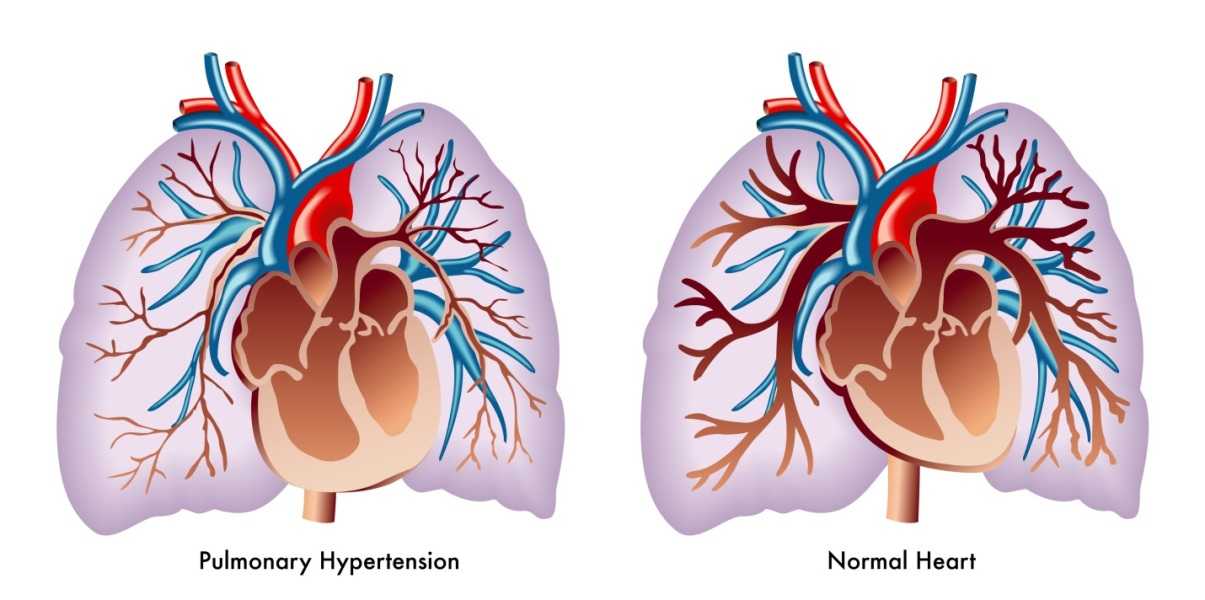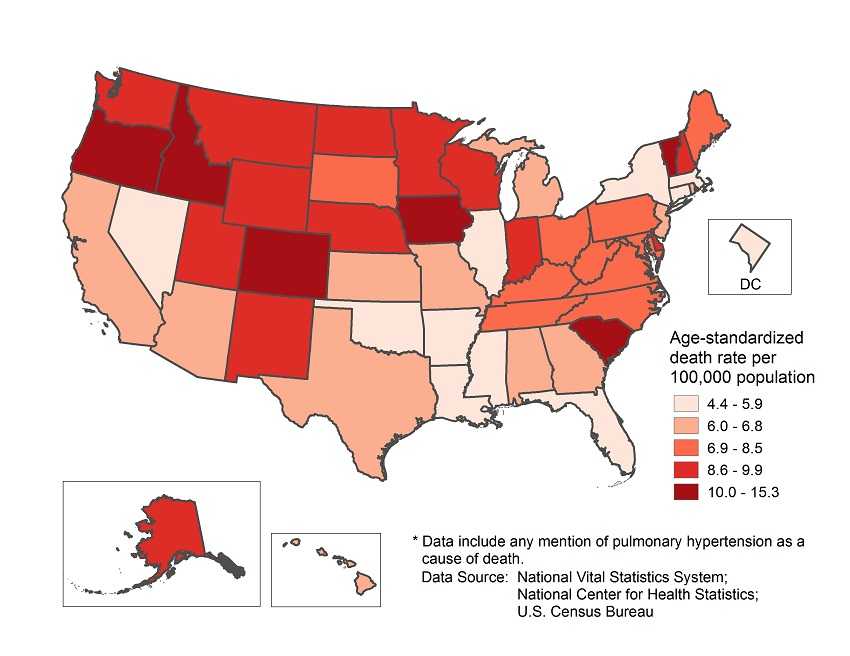Pulmonary Hypertension Fact Sheet
What Is Pulmonary Hypertension?
Pulmonary hypertension occurs when the pressure in the blood vessels leading from the heart to the lungs is too high. The heart pumps blood from the right ventricle to the lungs to get oxygen. Because the blood does not have to travel very far, the pressure in this side of the heart and in the artery taking blood from the right ventricle to the lungs is normally low—normally much lower than systolic or diastolic blood pressure. When the pressure in this artery gets too high, the arteries in the lungs can narrow and then the blood does not flow as well as it should resulting in less oxygen in the blood.1

Pulmonary Hypertension in the United States
Pulmonary hypertension can occur in association with many other diseases such as lung disease and heart disease. Some common underlying causes include pulmonary arterial hypertension from some types of congenital heart disease, connective tissue disease, coronary artery disease, high blood pressure, liver disease (cirrhosis), blood clots to the lungs, and chronic lung diseases like emphysema. Genetics also play a role in pulmonary hypertension. Pulmonary hypertension occurs at all ages, and the incidence of it increases with age. Pulmonary hypertension is more common among women, non-Hispanic blacks, and among people aged 75 or older. Heart failure is common in pulmonary hypertension.
Signs and Symptoms
The symptoms of pulmonary hypertension during the initial stage of the disease are common to many other medical conditions (e.g., difficulty breathing, fatigue), often resulting in a delayed diagnosis until more severe symptoms arise (e.g., dizziness, chest pain, ankle swelling, feeling your heart race or pound [palpitations]).2,3
Prevention and Treatment
While not all pulmonary hypertension can be prevented, efforts to prevent high blood pressure, coronary heart disease, chronic liver disease, and chronic lung disease from tobacco use can help prevent pulmonary hypertension in some patients.
At this time there is no cure for pulmonary hypertension. There are many different types of treatments for pulmonary hypertension including pills, inhaled medication, medicine given through the veins under your skin, medicine to reduce swelling in your feet (diuretics), and oxygen.
Death Rates of Pulmonary Hypertension* Among All Ages, by State, 2015

More Information About Pulmonary Hypertension
- National Institutes of Health Medline Plus
- National Heart Lung and Blood Institute (NHLBI)
- Pulmonary Hypertension Association
- American Heart Association
References
- George MG, Schieb L, Ayala C, Talwalkar A, Levant S. Pulmonary hypertension surveillance—United States, 2001–2010. doi:10.1378/chest.14-0527.
- Brown LM, Chen H, Halpern S, et al. Delay in recognition of pulmonary arterial hypertension. Chest. 2011;140:19-26.
- Deaño RC, Glassner-Kolmin C, Rubenfire M, et al. Referral of patients with pulmonary hypertension diagnoses to tertiary pulmonary hypertension centers. JAMA Intern Med. 2013;173(10):887-893.
- Page last reviewed: August 23, 2017
- Page last updated: August 23, 2017
- Content source:



 ShareCompartir
ShareCompartir